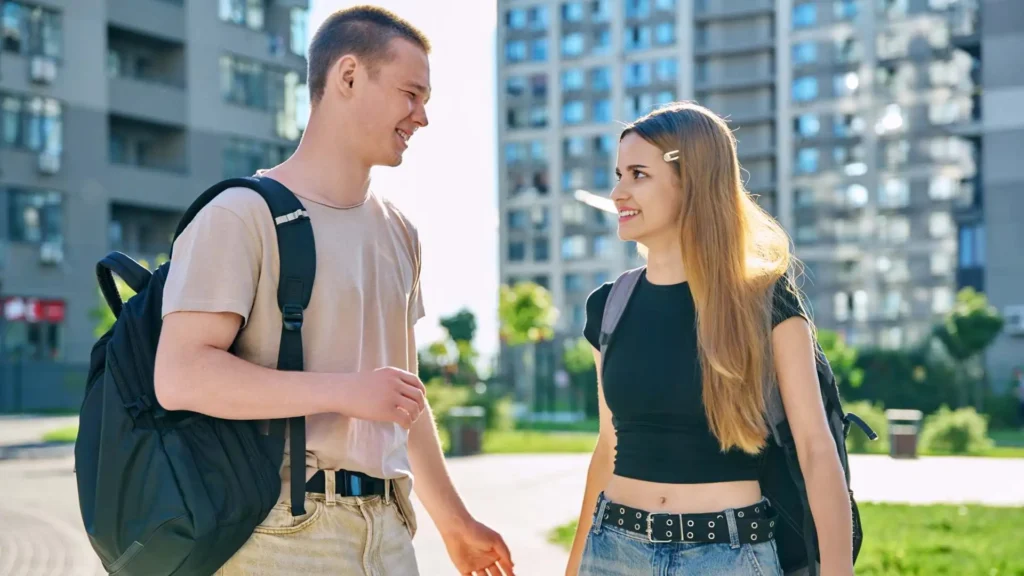If the term “eco-friendly” comes to your mind, you may envisage environmentally friendly but costly water bottles, organic foods, or fancy electric cars. What if it could save you money instead?
Many people believe that sustainable living costs a lot of money, but that is not always the case. Most green habits do not cost much. Cutting down on waste, using less energy, and reusing things might even lower your bills while saving the earth.
Blitz makes it even easier. With BudgetGPT to manage spending, PriceGPT to find affordable swaps, and DealsGPT to grab discounts, living green becomes both budget-friendly and stress-free. Ready to start saving today? Here’s more on being eco-friendly on a budget.
Simple Green Habits That Save You Money
You don’t need to buy fancy eco-products or spend big to live sustainably. The reality is, some of the most inexpensive habits are the ones that end up costing the least. They easily incorporate into student life and benefit in the long term. Some of them include:
Reduce, Reuse, Recycle – The Basics
Begin by considering what you discard the most. Plastic water bottles, paper plates, and infinite rolls of paper towels can be cheap in the short term but costly in the long run.
Instead of doing the above, try the following:
- A refillable water bottle substitutes for hundreds of bottles of water.
- Cloth towels and napkins have a lifespan of years rather than being discarded.
- A reusable coffee mug can even score you discounts at certain stores.
Blitz’s PriceGPT helps you find affordable, reusable products so you don’t overspend while making the switch. Reducing waste means keeping more cash in your wallet.
Read: How BudgetGPT Personalizes Budget Recommendations for Students
Going Paperless: Save Trees and Cash
Printing notes and assignments feels old-school and drains both money and space. Digitizing tools are smarter and less expensive. Here’s how:
- Use free software or cloud storage for class notes.
- Store digital receipts rather than print them.
- Share files online rather than shelling out for ink and paper.
Blitz makes this easier. You can use BudgetGPT to keep track of receipts and expenses, and even to organize your finances without needing to print.
Saving Energy: Simple Changes to Your Routine
Energy bills don’t have to be a huge priority if you’re staying in dorms, but little habit changes can save you and your household money. Try the following:
- Always switch off the light when you leave a room.
- Take out the plug of your charger and other electronic devices when not in use.
- Decrease your thermostat in winter, and increase it a bit in summer.
Blitz’s BudgetGPT allows you to create energy goals and track your savings in real time. Simple changes to your routine can translate into big savings every semester.
DIY Projects: Recycle and Repurpose What You Have
Why should one buy new things when one could make something with what one already has? Reusing stuff saves money and makes your space more unique and personal.
Some DIY projects are as follows:
- Use old T-shirts to make cleaning rags.
- Transform jars into pen or snack storage.
- Refurbish thrift store furniture using paint or upholstery.
Blitz’s BudgetGPT helps you set a limit for DIY costs so projects stay fun without becoming expensive.
Meal Planning and Zero-Waste Cooking
Food that goes to waste is also money that goes to waste. Meal planning is a great tool that helps you quickly see where leftover food can be reduced and what your grocery bill can be.
Here’s how to fix that:
- Before going shopping, plan your meals for seven days.
- Purchase staple goods, including rice, pasta, and oats, in large quantities.
- Do not hesitate to cook leftover food to create new meals.
Blitz’s PriceGPT analyzes grocery prices, letting you score the best deals on sustainable groceries without breaking the bank.
Budgeting for a Green Lifestyle: How to Afford Eco-Friendly Choices
Instead of guessing, make a plan to see sustainable choices clearly. With the right tools, you can balance your money and help the planet.
Setting a Green Budget with Blitz Tools
Begin your green budget by putting aside funds for earth-friendly lifestyle choices. You don’t require a great sum, just a small amount for minor exchange, like reusable totes, bulk food, or thrifted items. Having categories ensures you’re not deviating from your plan and overspending.
With BudgetGPT, you can make categories like:
- “Sustainable Living”
- “Eco-Friendly Products”
- “Green Transportation”
This allows you to monitor your green decisions independently and see what you save every month.
Sustainable Transportation: Green Commutes That Save Money
Transportation is an easy way to save money while helping the planet.
Here are some better options:
- Biking or walking is free and excellent for local journeys.
- Public transport is usually less expensive than having a car when you include gas, insurance, and parking.
- Carpooling with friends halves the cost, and electric cars can be a good option for heavy users.
With Blitz’s expense tracker, you can monitor transportation costs and see what you save by going green.
Eco-Friendly Products on a Budget
Eco-friendly items tend to last longer, but you don’t have to pay retail to reap the rewards. With Blitz’s DealsGPT, you can find discounts on essentials like:
- Eco-friendly apparel.
- Durable cookware.
- Energy-efficient equipment.
Shopping wisely means you receive quality without sacrificing your financial plans. In the long run, these items pay dividends in savings.
Eco-Friendly Habits for Long-Term Savings
Smart and wise choices can save you money and, at the same time, help you come up with a green lifestyle. By selecting quality, creating routines, and not engaging in wasteful fads, you can live green while not breaking the bank. Here are the habits you can adopt:
Invest in High-Quality, Long-Lasting Products
Cheap products break fast. That means you buy them again and again. Instead, invest in one good product.
Examples:
- A stainless steel water bottle.
- Robust bags rather than quick-fashion backpacks.
- LED bulbs that last for years.
Use Blitz’s PriceGPT to compare prices of products and find the most reasonable, long-lasting items.
Also Read: Reduce Food Waste and Save $40 a Week as a Student
Create Sustainable Habits That Become Second Nature
When green habits become routine, you save money automatically. Here are some small actions that you can do:
- Turning off lights
- Always carry a reusable bag.
- Pack a water bottle every day.
- Bike short distances instead of driving.
After a while, these actions don’t feel like “effort”—they’re just normal. And your bank account shows the difference.
Cutting Back on Fast Fashion: How to Build a Capsule Wardrobe
Fast fashion eats up your budget with constant buying of new things. Instead of doing so, the best thing you can do is make a capsule wardrobe with versatile, high-quality clothes, which in turn will save you money and also reduce waste. The fewer the number of clothes you have, the less the chances of you getting cluttered, spending, and even losing style flexibility.
With Blitz’s BudgetGPT, you can track fashion purchases and set limits on impulse buys. This results in saving money in the long run.
Overcoming Barriers: How to Make Eco-Friendly Living Work on a Budget
You can live sustainably without breaking the bank by adopting a few simple habits. Let’s explore how students in college can make green choices that are both enjoyable and affordable.
Affordability Myths and How to Tackle Them
Do you think environmentally friendly products always cost a fortune? That is simply not true. A lot of sustainable choices may actually cost you less if you know where to look. Here is what to do:
- Buy secondhand clothing, furniture, and electronics at thrift stores or secondhand stores.
- Turn to DIY for gifts and household items instead of shopping for new ones.
- Shop in bulk to eliminate waste from packaging and get lower prices on items for your daily use.
Going green is not merely a money thing. It’s a matter of creativity. The small changes will finally amount to savings and a positive eco-impact.
Using Rewards and Deals to Make Sustainability Affordable
Living green becomes more affordable when you shop smart. Here’s how:
- Use rewards and cashback apps to purchase green items. Get reusable bottles, green cleaners, or energy-efficient gadgets at a reduced price.
- Check out online tools like Blitz’s DealsGPT and PriceGPT. They assist in sourcing the most suitable sustainable product deals.
- Seasonal sales, student discounts, and loyalty programs are the things to look for. The money saved in this way will allow you to stretch your budget to the maximum.
Conclusion – Start Small, Save Big: Eco-Friendly Living on a Budget
Living eco-friendly is not necessarily costly or hard. Meal planning, reusing, and energy saving are minor changes that will not only reduce your expenses but also contribute to saving the earth.
Blitz makes it even simpler to remain on course. With BudgetGPT, you determine your budget for spending, PriceGPT identifies the top deals on green products, and DealsGPT assists you in snatching deals without hassle.
Don’t delay saving money and living green. Get started with Blitz now and make green living an affordable and future-proof lifestyle.
FAQs About Being Eco-Friendly on a Budget
Can I live eco-friendly without spending too much?
Yes, you can! Living green is less expensive most of the time than one thinks. For instance, just do these: reuse your water bottle, take your bike as a means of transportation, and cook your meals by yourself.
What are the cheapest eco-friendly products to buy?
Some of the affordable, eco-friendly products are reusable bags over which the user has full control, stainless steel bottles, bamboo toothbrushes, and LED light bulbs. Buy them once, and you will be saving money and at the same time helping the Earth every day.
How can I reduce my carbon footprint without spending a lot?
One can reduce the carbon footprint to a very small amount with a fairly small budget. Instead of using a car, which is the most common source of carbon emissions, take the bus or walk the streets, prepare dishes at home as well, and buy second-hand clothes.
Are there sustainable habits I can start with that will save me money right away?
Absolutely! Do not buy bottled drinks any longer, use a reusable coffee cup, and reduce food waste. These three simple steps make you save money, on top of which, you get to live sustainably.
How do I track eco-friendly purchases and savings in my budget?
Tracking eco spending is simple with Blitz tools. BudgetGPT organizes your green purchases, PriceGPT compares affordable eco products, and DealsGPT finds discounts. With these tools, you clearly see how much you save every month.





